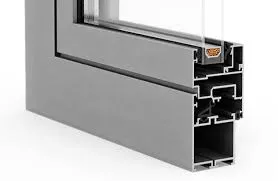ornamental metal work
The Timeless Art of Ornamental Metal Work
Ornamental metal work is a captivating and intricate craft that has evolved through centuries, blending functionality with artistry. From ornate gates and railings to stunning sculptures and decorative panels, this art form showcases the skilled manipulation of various metals to create visually striking pieces that enhance aesthetic appeal and serve practical purposes. In this exploration of ornamental metal work, we will delve into its history, techniques, and modern applications.
A Glimpse into History
The origins of ornamental metal work can be traced back to ancient civilizations, where artisans crafted metal objects for both utility and decoration. In Egypt, bronze was forged into intricate jewelry and ceremonial items, while the Greeks and Romans utilized iron to create elaborate architectural elements. The Middle Ages saw the emergence of blacksmithing as a respected trade, with artisans producing everything from weapons to decorative ironwork adorning cathedrals and castles.
As the Renaissance period unfolded, ornamental metal work flourished, with artisans drawing inspiration from nature and classical motifs. This era witnessed the rise of guilds, where craftsmen honed their skills and shared their techniques. With the advent of new tools and technologies, such as the introduction of wrought iron, artists were able to push the boundaries of their creativity, resulting in breathtakingly intricate designs.
Techniques and Materials
At the heart of ornamental metal work lies a variety of techniques that have been passed down through generations. One of the most traditional methods is forging, where metal is heated and shaped using hammers and anvils. This technique allows for the creation of unique textures and detailed patterns that are characteristic of handmade pieces.
Another popular method is casting, where molten metal is poured into molds to create intricate shapes. This technique has been widely used for producing decorative elements such as finials, balusters, and sculptures. Additionally, processes like repoussé (where metal is shaped by pushing from the reverse side) and engraving allow for stunning surface details that bring designs to life.
ornamental metal work

In terms of materials, artisans typically work with metals such as iron, bronze, brass, and aluminum. Each metal has its own unique properties and aesthetic qualities, influencing the final outcome of the piece. For instance, wrought iron is favored for its strength and malleability, making it ideal for fences and gates, while bronze offers a rich color and excellent corrosion resistance, perfect for decorative sculptures.
Contemporary Applications
In today’s world, ornamental metal work continues to hold a significant place in architecture and design. Modern architects and interior designers are increasingly incorporating metal elements into their projects. Custom railings, light fixtures, and furniture pieces adorned with intricate metalwork can add a touch of elegance and personality to any space.
Moreover, outdoor spaces benefit greatly from ornamental metal work. Garden gates, trellises, and sculptures serve not only as functional elements but also as focal points that draw the eye and enhance the natural beauty of the surroundings. The durability of metals ensures that these pieces can withstand the elements while maintaining their visual appeal for years to come.
In addition, the rise of digital fabrication technology has introduced new possibilities for ornamental metal work. CNC (Computer Numerical Control) machines can create precise designs that merge traditional craftsmanship with modern technology. This fusion allows for greater innovation, enabling artists to experiment with complex patterns and forms that were once difficult to achieve by hand.
Conclusion
Ornamental metal work is a testament to the fusion of art and craftsmanship. As we reflect on its rich history and embrace contemporary techniques, it is evident that this timeless craft continues to evolve while retaining its core essence. Whether gracing a historical building or enhancing a modern space, ornamental metal work remains a cherished form of artistic expression, transforming the ordinary into the extraordinary. As we move forward, it is essential to preserve these artisan skills and celebrate the beauty that metal work brings to our lives and surroundings.
-
Wrought Iron Components: Timeless Elegance and Structural StrengthNewsJul.28,2025
-
Window Hardware Essentials: Rollers, Handles, and Locking SolutionsNewsJul.28,2025
-
Small Agricultural Processing Machines: Corn Threshers, Cassava Chippers, Grain Peelers & Chaff CuttersNewsJul.28,2025
-
Sliding Rollers: Smooth, Silent, and Built to LastNewsJul.28,2025
-
Cast Iron Stoves: Timeless Heating with Modern EfficiencyNewsJul.28,2025
-
Cast Iron Pipe and Fitting: Durable, Fire-Resistant Solutions for Plumbing and DrainageNewsJul.28,2025
-
 Wrought Iron Components: Timeless Elegance and Structural StrengthJul-28-2025Wrought Iron Components: Timeless Elegance and Structural Strength
Wrought Iron Components: Timeless Elegance and Structural StrengthJul-28-2025Wrought Iron Components: Timeless Elegance and Structural Strength -
 Window Hardware Essentials: Rollers, Handles, and Locking SolutionsJul-28-2025Window Hardware Essentials: Rollers, Handles, and Locking Solutions
Window Hardware Essentials: Rollers, Handles, and Locking SolutionsJul-28-2025Window Hardware Essentials: Rollers, Handles, and Locking Solutions -
 Small Agricultural Processing Machines: Corn Threshers, Cassava Chippers, Grain Peelers & Chaff CuttersJul-28-2025Small Agricultural Processing Machines: Corn Threshers, Cassava Chippers, Grain Peelers & Chaff Cutters
Small Agricultural Processing Machines: Corn Threshers, Cassava Chippers, Grain Peelers & Chaff CuttersJul-28-2025Small Agricultural Processing Machines: Corn Threshers, Cassava Chippers, Grain Peelers & Chaff Cutters












